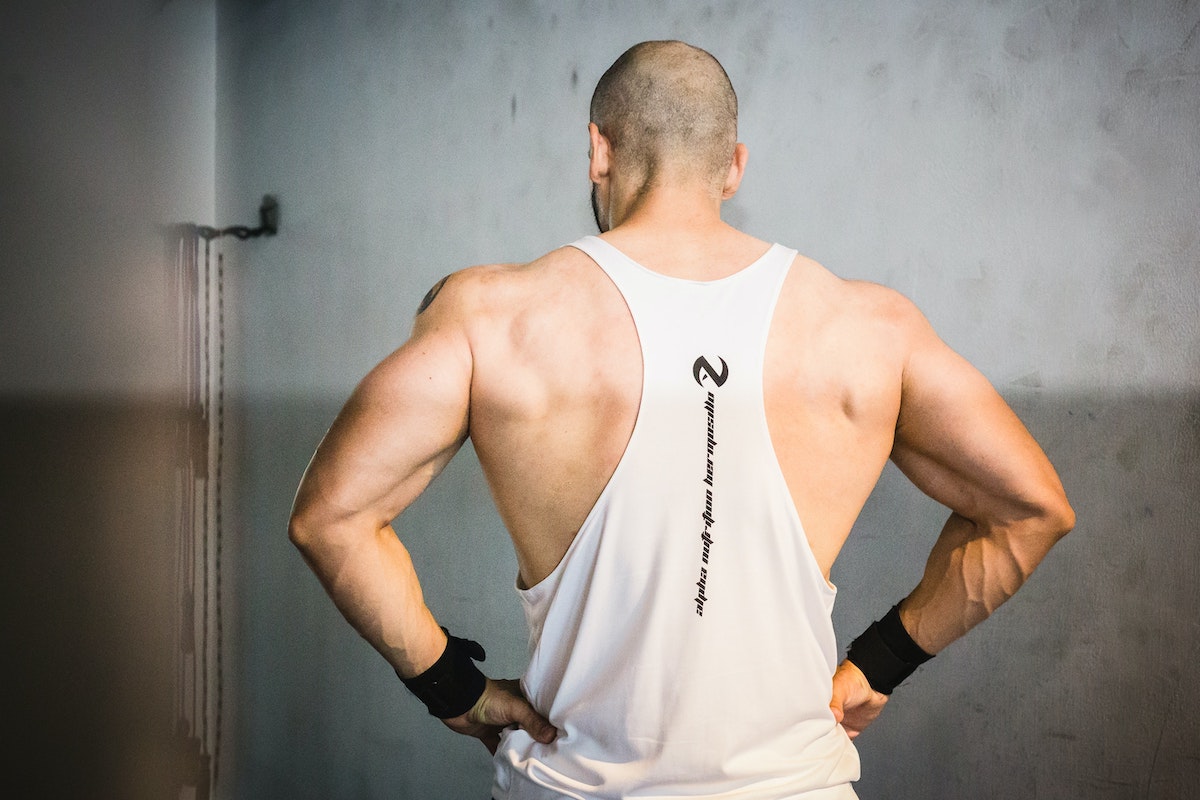If you are looking to build a strong back and impressive physique, you have to know how to do lat pulldown. This is important because the back is often overlooked when sculpting the upper body.
It’s essential to pay attention to the muscles we can’t see, just as we’d take the time to work on abs and biceps. The lat pulldown should be a trusted part of your workout arsenal to attain the optimal upper body strength necessary for balanced, functional strength and protection against injury.
Now, it’s time to examine lat pulldowns more closely. We’ll discuss how to effectively perform this exercise with equipment and grip variations and focus on maintaining the proper form to work your muscles safely and successfully.
What muscles do lat pulldowns work?

Several muscles are worked during lat pulldowns, most notably the latissimus dorsi muscles, known commonly as the “lats.” The lats are the largest muscle in the back and are essential for upper body movement. In addition to the lats, an effective lat pulldown will successfully work your biceps and forearms.
What equipment do you need for lat pulldowns?

When performing lat pulldowns, it helps to have some resistance. You can use cables, resistance bands, or a lat pulldown machine. When performing the pulldowns as a cable exercise, use a weight that you’ll be able to manage for 10 repetitions.
How to do lat pulldowns

You can execute lat pulldowns in a standing or seated position.
- Start with an overhand grip about shoulder-width distance.
- Pull the bar or resistance band down towards your chest by bending your elbows. Be sure to maintain an upright chest and straight back throughout this movement.
- When the bar or bands touch your chest, squeeze your shoulder blades together.
- Release and gradually allow your arms to straighten back to the starting position.
- Repeat for 3 to 4 sets of 10 to 15 reps.
Grip variations to try

Close grip
One variation you could try is the close grip. This is the best option if your forearms often feel achy and painful when you pull down. This version is known as a close grip because you will use a Double D handle. This cable attachment is shaped like an upside-down V, and when using it, your palms are facing each other and positioned inside your shoulders.
Close grip variations are usually performed with the standard lat pulldown bar and can benefit your range of motion. With this method, your biceps are more active compared to other grip variations.
Neutral grip
The neutral grip variation is often done using a typical lat pulldown bar. This type of grip encourages a broader back and boosts upper body strength. As you do this form, your palms will face forward and be directly in line with your shoulders.
This variation calls for a more natural posture and allows you to exercise more comfortably if you often have shoulder and wrist pain. You’ll want to use the neutral grip if lat pulldowns are a new part of your workout or if you have limited shoulder mobility.
Reverse grip
You can execute the reverse grip by keeping your hands at a shoulder-width distance on the bar with an underhand placement in which your palms face you. You can use the standard pulldown bar when opting for this variation. When performing this grip, you’ll promote better involvement of your biceps and the muscles in the middle of your back, enabling you to lift heavier loads. Pull your elbows back in a downward motion and stop once the bar is just beneath your chin.
Wide grip
To do the wide grip variation, position your hands wider than shoulder-width. In this case, the primary focus is the movement of adduction, in which your limbs move toward the middle of the body. With adduction at play, you’ll be giving extra attention to your triceps.
Follow the typical movements of the lat pulldown, but for this variation, focus on bringing your elbows down to your hips. You’ll want to be cognizant of maintaining an upright posture and use a lighter weight to support your range of motion.
Frequently asked questions

Should you lean back on lat pulldowns?
When doing your lat pulldowns, avoid leaning back. Instead, be sure to keep your back and chest upright. Leaning back can increase the risk of injury and interfere with the tension applied to the targeted muscles. Working out and maintaining an upright posture can safeguard against any damage to the lower back.
How to do lat pulldowns without a machine?
If you don’t have a machine, you can do lat pulldowns with resistance bands. If using the bands, make sure the center of the band is stable and secured overhead. Kneel down and grab a handle in each hand, allowing your arms to create a V formation. Keep your chest up and back straight as you pull the handles down either side of your body. You could also mimic the lat pulldown movement with pull-ups.
How do you activate lats during pulldowns?
You can activate your lats by opting for a wide grip during the exercise. Also, you can use a lighter weight that really allows you to focus on your form for better activation. Slowing down the movement can prove to be more of a challenge and deliver better results. Pausing for a few seconds at the bottom of the movement can also be effective.
Why don’t I feel lat pulldowns in my back?
You may not feel lat pulldowns in your back if the grip or form applied isn’t best suited for you. Try a wide overhand grip to ensure focus on the lats, as this grip allows for a greater range of motion. Additionally, avoid just bringing your arms down to lower the bar. Instead, make deliberate use of your elbows to pull down, as this gives better emphasis to your lats.
Another critical point to note is posture, as a straight back can balance the workload applied to your lats. Additionally, use an appropriate weight because a weight that is too heavy may not work your lats thoroughly, as other muscle groups would have to compensate.




